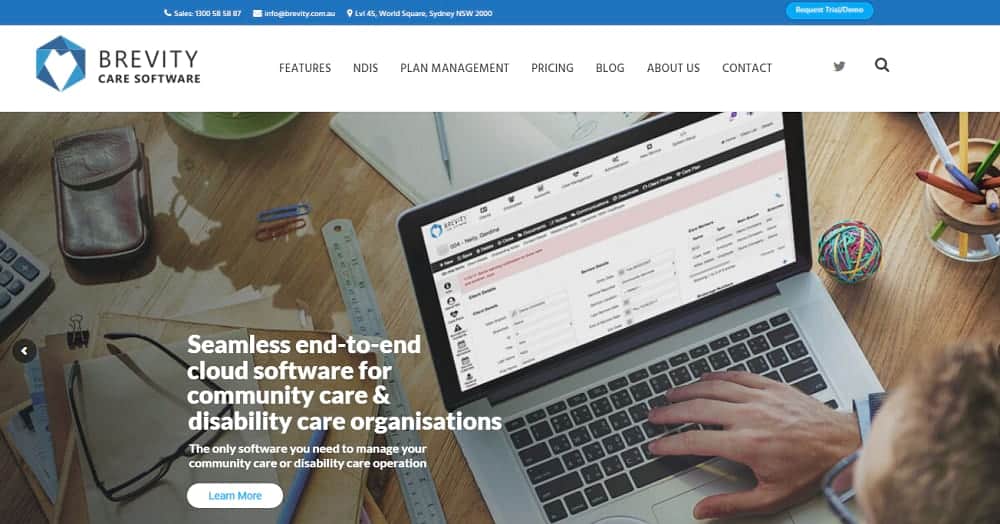
“Liberty, when it begins to take root, is a plant of rapid growth.” So said the visionary and founding father of independence George Washington. We can’t think of a better way to celebrate independence than by providing you with a breakdown of following the NDIS SIL operational guidelines.
The NDIS SIL operational guidelines, provide guidance on how to get your clients the best onsite support available to get them living as independently as possible.
Providing NDIS SIL supports and services requires a significant amount of planning, organising, paperwork and record-keeping.
That is why we have created a breakdown to follow the NDIS SIL operational guidelines. Brevity Care is focused on helping NDIS SIL providers effectively serve NDIS clients even better. The simple to use, powerful software has been built from the ground up with NDIS providers’ needs in mind.
The NDIS SIL Operational Guidelines Explained
The NDIS SIL operational guidelines include updated content and further explanation about the type and intensity of SIL supports and how funding decisions are made.
Supported independent living (SIL) is for people who require higher levels of support at home on an ongoing basis. NDIS has created a funding stream that will support individuals to be able to live independently in their own home or in a shared housing service. With these supports in place people can begin to live more independently and meaningfully.
What is included in Supported Independent Living (SIL)?
The NDIS SIL operational guidelines cover:
- help with personal care tasks
- community access that is not regular
- assistance to build skills in things like meal preparation and cooking, cleaning, and developing a routine
- help to action any behaviour support plans
- support to develop social skills
- aide with supervision, personal safety and security
- support to give medication
- assistance with medical appointments
- support to get to and from community access activities
What is not included in the Supported Independent Living (SIL)?
The NDIS SIL operational guidelines don’t cover:
- grocery, gas, electricity, water, telephone, or internet bills (utility bills)
- vehicle costs
- rent, board or lodging costs
- household budgeting or bill paying activities
- expenses related to holidays
- paid personal support during admission to hospital
- paid personal support if you’re in custody or to implement community supervision orders.
- nursing, medical, palliative care and other health-related supports.
How much Supported Independent Living assistance can a client can receive?
To determine how much supported living assistance NDIS participants are entitled to, a Home and Living Supports Request Form will need to be completed.
This form asks about such things:
- current circumstances
- strengths
- barriers
- ongoing requirements.
The NDIA reviews the information provided in this form and other supporting documentation. The NDIA will use this information to identify appropriate home and living supports that may assist the participant to pursue their goals.
- A roster of care will need to be completed. Providers fill in the roster of care template and tool to outline the supports they propose to deliver,
The NDIA uses this information to gain an insight into what a typical week may look like for the SIL participant.
How does a client get supported independent living in their plan?
Initially, the provider will establish a service agreement with the client for supported independent living. A service agreement is an agreement between a client and a provider. It sets out what supports a client has agreed to buy from a service provider and how those supports will be provided. The service agreement should include the details of how the provider will deliver supported independent living support.
Another key point to consider is discussing the following with a client when making the service agreement:
- the ratio, amount, and intensity of supports
- the price of supports
- clients’ responsibilities
- provider’s responsibilities
- duration of agreement
- how it can be changed
- how client and provider will solve any disputes.
What happens once supported independent living is in your clients’ plans?
Firstly, you will need to provide a copy of the plan to the client once it is approved. It will explain how much funding the client has for supported independent living. Secondly, you will need to explain the hours and ratios of support funded in the plan.
Final Thoughts
Running an NDIS business, especially if you provide SIL supports, requires a significant amount of organisation and dedication. When you get the right balance, you position your business to deliver exceptional quality care for people living with a disability.
As a provider, it is important that you have the right tools at the right price to make your job easier, your clients’ lives better, and your business more efficient.
If you would like to know more about how Brevity can help your NDIS business streamline its processes and unlock its growth potential, why not request a free demo today?




